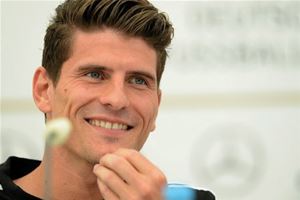As the 2013 Giro d’Italia draws to a close on May 26, 2013, many have remembered Marco Pantani, the last cyclist to win both the Italian national road-race and the Tour de France in the same year (1998). For several years, Italy’s Pantani catapulted the Giro, and indeed Italian cycling, into the headlines of the international press, captivating global audiences through his engaging charisma and superlative sporting ability. Yet despite such rock-star status, doping allegations and his abuse of recreational drugs, which culminated in his death in 2004, taint his incredible sporting legacy. TF’s Sam Lawley revisits the memory of one of the most iconic figures of Italian sport as this year’s edition of the Giro races through the country.
Ten years after Pantani last rode the Giro d’Italia, the route of the famous cycling road-race is still in places daubed with tributes to the master cyclist: ‘Viva Marco,’ ‘Forza Pantani’ and ‘Il Pirata: 10 anni nel ricordo’ have all been spotted along this year’s Giro. Outside of Italy, his legacy is just as strong, with new books, songs and articles being published each year, and even a documentary film, The Accidental Death of a Cyclist, set to be released in Britain later this year. Pantani-mania is characterised by a fervent adoration, passionate nostalgia and a worldwide appreciation of such a one-of-a-kind athlete. But why is this deceased cyclist, convicted of cheating through blood-doping and persecuted by international courts, still idolised by the masses?
Above all, Marco Pantani was a throwback to the halcyon days of cycling, the 1950s and the age when chivalric ideals and romantic gestures pervaded the sport. Rather than meticulously planning attacks with team tacticians and racing analysts, Pantani would make spontaneous breaks, backing his intuition to decide the best moment to launch an offensive. Born into a family of humble origins, this sporting giant largely eschewed the media limelight, and always remained true to the human values of self-sacrifice and fraternal love. Indeed, he would even stop to help fellow cyclists who had been injured in races rather than exploit his opponents’ misfortunes.
While Pantani was gentle and benevolent with those around him, he showed no such temperance with himself. The ultimate competitor, he would push himself to epic lengths both in training and in competitions to clinch a victory. Overcoming pain and suffering while on his bike became part and parcel of his incredible cycling career. His biographer Matt Rendell notes that ‘that was how he won, free-diving within himself to greater and darker depths than others dared, surfacing barely alive, tasting blood, from the great apnoea.’
This masochistic self-sacrifice had its rewards, and by the mid-1990s his strong work ethic had established Pantani at the top of his sport. Fellow cyclist Nicola Miceli reflected that following Pantani in mid-race was ‘like trying to hang on to an aircraft’s wing.’ The flyweight cyclist who had been deemed at a young age as being too skinny to become a professional athlete would regularly butcher his opponents on the mountain climbs, making the most of his wiry frame and impressive lung capacity.
As well as his physical talents, Pantani also possessed great charisma. Preceded on cycling’s zenith by the machine-like Miguel Indurain, and followed by the ultra-efficient and somewhat predictable Lance Armstrong, Pantani was loved for his touches of eccentricity. In 1996, when he returned to racing after an accident, he did so in disguise, wearing a blonde wig. On several of the grand tours, he would assemble teammates in the evenings after races to organize illicit trips to ice-cream shops, going against the instructions of the team doctor. He also wrote poetry, painted and liked to refer to himself in the third person.

His larger-than-life personality is reflected by the many nicknames he acquired: Elefantino (the Italian for ‘Dumbo’), because of his prominent ears; Nosferatu (‘vampire’), because of his corpselike appearance; Pac-man, because of the way he ate up adversaries on the mountain climbs. The one that stuck, however, was Pirata (‘Pirate’), because of his swashbuckling style and buccaneering joie de vivre. By 1999, he was using the nickname as a trademark, sitting on a saddle with a skull and crossbones design, and sporting earrings, a goatee beard and an array of colorful bandanas. Indeed, Pantani often threw down one of these pirate-like bandanas to mark the start of a Promethean acceleration, signaling to television crews that the action was about to begin.
Like many geniuses, however, Pantani proved to be tragically flawed.
Pushing his body to extremes was an inherent trait, and coupled with the prevailing blood-doping culture in cycling, it is likely that he took performance-enhancing drugs. In a day that went down in Italian sporting history, Pantani was arrested by the Carabinieri at the mountain town of Madonna di Campiglio. Overnight, he went from hero to zero, ostracized from the sport he loved and losing all sponsorship deals. He spent his last four years mired in racing bans, legal battles and depression. Even after the tragic death of the hero, found dead alone in a hotel room on Valentine’s Day in 2004, it was hard not to sympathise with the childlike vulnerability of the man.
It is this overriding sense of human authenticity, which emanated so naturally from Pantani, that makes people identify so strongly with him. Ten years after his last competitive cycling race, the iconic athlete’s legacy as a cyclist and a man continues to live strong.





